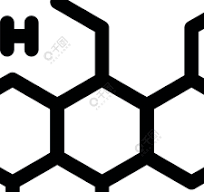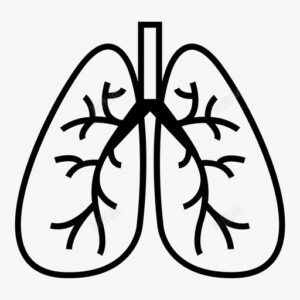Aztreonam for Injection.
Effects and efficacy:
Used to treat complicated or uncomplicated urinary tract infections caused by sensitive bacteria (such as Escherichia coli, Klebsiella pneumoniae, Proteus mirabilis, Pseudomonas aeruginosa, Enterobacter cloacae, Serratia marcescens, etc.), such as pyelonephritis, cystitis, etc. Used to treat lower respiratory tract infections caused by sensitive bacteria (such as Escherichia coli, Klebsiella pneumoniae, Pseudomonas aeruginosa, Haemophilus influenzae, Proteus mirabilis, Enterobacter cloacae, Serratia marcescens), such as acute tracheitis, bronchitis, pneumonia, etc. Used to treat systemic infections caused by sensitive bacteria (such as Escherichia coli, Klebsiella pneumoniae, Pseudomonas aeruginosa, Proteus mirabilis, Enterobacter cloacae, Serratia marcescens), such as sepsis, etc. It is used to treat intra-abdominal infections caused by sensitive bacteria (such as Escherichia coli, Klebsiella pneumoniae, Pseudomonas aeruginosa, Proteus mirabilis, Enterobacter cloacae, Serratia marcescens), such as acute cholecystitis, acute cholangitis, acute appendicitis, acute colonic diverticulitis, liver abscess, peritonitis, etc. It is used to treat gynecological infections caused by sensitive bacteria (such as Escherichia coli, Klebsiella pneumoniae, Proteus mirabilis, Enterobacter cloacae), such as endometritis, pelvic inflammatory disease, etc. It is used to treat postoperative wounds and burns, ulcers and other skin and soft tissue infections caused by sensitive bacteria (such as Escherichia coli, Proteus mirabilis, Serratia marcescens, Enterobacter, Pseudomonas aeruginosa, Klebsiella pneumoniae, Citrobacter rodentium), such as burns, scalds, etc. It is used to treat cystic fibrosis patients with pulmonary Pseudomonas aeruginosa infection (only inhalation, this dosage form is not available in China) to improve their respiratory symptoms. Cystic fibrosis (CF) is a multisystem disease caused by a single large gene mutation on chromosome 7 that affects the lungs, digestive system, sweat glands and reproductive tract, but lung disease remains the leading cause of morbidity and mortality in CF patients.
Usage and Dosage:
Intravenous drip for injection: Dissolve at least 3 ml of water for injection for every 1 g of aztreonam, and then dilute with appropriate infusion (0.9% sodium chloride injection, 5% or 10% glucose injection or Ringer’s injection). The concentration of aztreonam should not exceed 2%, and the drip time is 20-60 minutes. Intravenous push: Dissolve each bottle with 6-10 ml of water for injection and slowly inject into the vein within 3-5 minutes. Intramuscular injection: Dissolve at least 3 ml of water for injection or 0.9% sodium chloride injection for every 1 g of aztreonam and inject deep into the muscle. When the patient has a single dose greater than 1 g or suffers from sepsis, other severe systemic infections or life-threatening infections, intravenous administration should be given, with a maximum dose of 8 g per day. Adult Dosage Bacterial meningitis: 6-8g/d intravenous injection, divided into doses, once every 6-8 hours. Lower respiratory tract infection caused by Gram-negative bacteria, endometritis, female genital infection, skin and/or subcutaneous tissue infection, abdominal infection, peritonitis, moderate to severe infection: 1g or 2g intravenous/muscular injection, once every 8 hours or 12 hours (maximum dose of 8g/d); severe infection (or life-threatening infection, or any infection caused by Pseudomonas aeruginosa): 2g intravenous injection, once every 6 hours or 8 hours (maximum dose of 8g/d). Hospital-acquired pneumonia or ventilator-associated pneumonia: 2g intravenous injection, once every 8 hours. Prevention of postoperative infection: 2g intravenous injection, 1 hour before surgery; if necessary, the drug can be repeated every 4 hours during surgery; the total medication time should not exceed 24 hours. Sepsis: 2g intravenous injection, once every 6 hours or 8 hours (maximum dose of 8g/d). Urinary tract infection: 0.5g or 1g intravenous/muscular injection, once every 8 hours or 12 hours (maximum dose is 8g/d). Dosage and Administration for Children Endometritis, female genital infection, skin and/or subcutaneous tissue infection, abdominal infection, lower respiratory tract infection, peritonitis, urinary tract infection caused by Gram-negative bacteria, (mild to moderate infection) ≥9 months of age: 30mg/kg intravenous injection, once every 8 hours (maximum dose is 120mg/kg/d); (moderate to severe infection) ≥9 months of age: 30mg/kg intravenous injection, once every 6 hours or 8 hours (maximum dose is 120mg/kg/d). Dosage adjustment for renal insufficiency Renal impairment (administration by inhalation): No dose adjustment is required. Renal impairment (creatinine clearance CrCl range is 10-30mL/min/1.73m): initial dose 1-2g; maintenance dose is 0.5 times the usual initial dose; renal impairment (creatinine clearance CrCl less than 10mL/min/1.73m): initial dose 0.5-2g; maintenance dose is 0.25 times the usual initial dose, and the medication interval is the usual medication interval; for patients with severe infection, add 0.125 times the usual initial dose after each hemodialysis treatment. Hemodialysis: initial dose is 0.5-2g; maintenance dose is 0.25 times the usual initial dose, and the medication interval is the same as the usual medication interval; for patients with severe infection, add 0.125 times the usual initial dose after each hemodialysis treatment. The dosage for elderly patients depends on their specific renal function. Inhalation Cystic fibrosis (Pseudomonas aeruginosa infection): Children and adolescents ≥7 years of age, after using bronchodilators, nebulize 75 mg (mix 1 vial of the drug with 1 mL of 0.17% NaCl solution) of aztreonam through a nebulizer 3 times a day (at least 4 hours between each dose) for 28 days, followed by 28 days of rest. Repeat the cycle. Canadian label: Children and adolescents ≥6 years of age, use as above. Inhalation precautions Reconstitute immediately before use with 1 mL of sterile diluent (normal saline). Squeeze the diluent into the opened glass bottle. Replace the rubber stopper and gently shake the vial until the contents are completely dissolved. Only use the dedicated nebulizer for inhalation, do not use other nebulizers, and do not mix other drugs with aztreonam. Give bronchodilator before administration (short-acting: 15 minutes to 4 hours before administration; long-acting: 30 minutes to 12 hours before administration). For patients receiving multiple inhalation therapy, bronchodilators are used first, followed by mucolytics, and finally aztreonam. When using an inhaler, pour the prepared solution into the handheld device of the nebulizer system, then open the device, contain the mouthpiece with your mouth, and breathe normally through the mouth. The administration time is usually 2-3 minutes. The interval between two doses should be ≥4 hours.
Adverse reactions:
Injection adverse reactions can cause phlebitis or thrombophlebitis after intravenous administration, and discomfort or lumps at the injection site after intramuscular injection, with an incidence of approximately 1.9% and 2.4%, respectively. Systemic reactions, including nausea, vomiting, diarrhea and rash, have an incidence of 1%-1.3%. Adverse reactions with an incidence of less than 1% are classified by system as follows: allergic reactions-anaphylactic shock, angioneurotic edema, bronchospasm; blood system-leukopenia, neutropenia, thrombocytopenia, anemia; gastrointestinal system-clostridium difficile-associated diarrhea, including pseudomembranous colitis or gastrointestinal bleeding. Symptoms of pseudomembranous colitis may occur during or after treatment with aztreonam. There have been reports of Clostridium difficile-associated diarrhea after 2 months of use. Skin and its appendages – toxic epidermal necrolysis, purpura, perennial erythema, exfoliative dermatitis, urticaria, pruritus. Cardiovascular system – palpitations, hypotension, transient electrocardiogram changes. Respiratory system – cough, asthma, chest tightness, dyspnea, chest pain. Liver system – abnormal liver function, elevated AST, elevated ALT, jaundice. Nervous system – epilepsy, tremor, confusion, vertigo, paresthesia, insomnia, dizziness. Musculoskeletal system – muscle pain. Systemic damage: chills, fever, fatigue, sweating, facial flushing, etc. Others: elevated creatinine, tinnitus, diplopia, oral ulcers, taste changes, tongue numbness, sneezing, nasal congestion, bad breath, vaginal candidiasis, breast tenderness, etc. Adverse reactions of inhalation agents>10%: cough (54%), nasal congestion (16%), wheezing (16%), pharyngeal pain (12%). Fever (13%; more common in children). 1% to 10%: Cardiovascular system: chest discomfort (8%). Skin: rash (2%). Gastrointestinal tract: abdominal pain (7%), vomiting (6%). Respiratory system: bronchospasm (3%; patients with FEV decreased ≥15%). <1%, post-marketing, and/or case reports: joint pain, facial rash, facial swelling, allergic reaction, joint swelling, pharyngeal edema.
Drug contraindications:
Children use with caution Use with caution during pregnancy Use with caution during lactation
Share:
Products
Our offers
Health Classification
Let us work together to protect precious health































